Aus unserem Archiv: Im Jahr 2013 stellte Bruce Lindsay aus Australien lancianews eine Reihe von Artikeln zur Verfügung, in welchen er korrespondierend zu seinem Buch „70 Years of Trailblazing“ aus dem Jahr 2009 herausragende Modelle der Marke Lancia von den 1930er bis in die 1970er-Jahre umfassend beschreibt und bewertet. Wir werden nun in unregelmäßigen Abständen diese Berichte wieder bringen.
Zweiter Beitrag über den Flavia-basierten Superjolly:
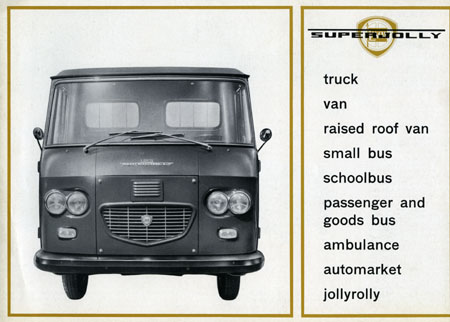
Production of the front wheel drive Flavia from 1960 gave Lancia the chance they had craved since 1915; to enter the light commercial market with a vehicle which could outgun Fiat and Alfa Romeo.
Efforts to enter the lucrative Italian Government-driven demand for light ambulances, delivery vans and small buses were frustrated by Lancia’s refusal to compromise on quality and price, giving its competitors the edge when tendering for supply. The diminutive Ardea and later Appia commercials filled a very narrow niche in that market, but sold in numbers as small as the cars.
Introduction of the Volkswagen Kombi showed the advantage of a completely flat loadspace, and introduced the uncompromising ‘box on wheels’ concept to light load-carrying commercials; although the absence of a driveshaft gave an unobstructed and low-mounted space, the VW’s rear-mounted engine meant that side-loading was the only way in for heavy objects, or over the top of the engine compartment from the rear. Lancia’s Appia-based Jolly allowed side and rear access, at the expense of a higher floor level dictated by its rear drive.
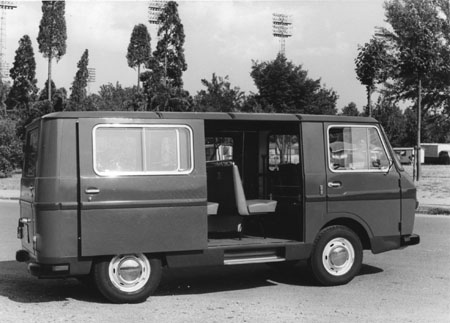
Alfa Romeo built Italy’s first front-drive van; Europe’s first was probably the 1949 German Tempo Matador, powered by a mid-mounted VW engine driving its front wheels. Alfa’s Furgone was introduced in 1954, employing a detuned version of their 1.290 cc dohc four-cylinder Giulietta engine, driving the front wheels through equal length half-shafts. Available in a range of body styles, the Furgone was markedly successful for Alfa, and sold strongly into the 1970s, offering a diesel engine option from 1957.
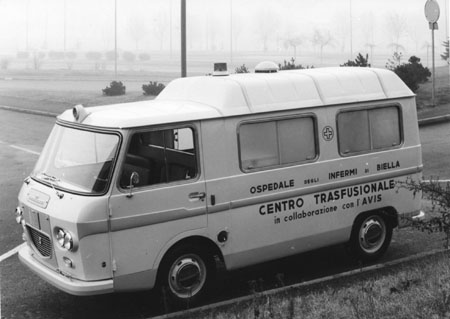
From 1963 Lancia offered their Superjolly range based on the Flavia. The name was a carryover from the Jolly name used first for whimsical beach cars built by Ghia on Fiat 500 and 600 floorpans, usually painted pink and bedecked with surrey-style fabric roofs. Lancia appropriated the name for its late Appia load-carrier, and obviously thought they were onto a good thing when naming the Flavia-based vehicles.
The Superjolly’s market advantages – apart from the usual peerless Lancia build quality – were its relatively simple and very strong boxer engine, its four disc brakes, its low-mounted front engine, and its exceptionally low and unobstructed load space. Load floors were never more than 482 mm above ground level, making them particularly attractive for one-man operations and for applications requiring passenger loading. Coachbuilder Boneschi quickly designed an ambulance which was sold through Lancia dealers, satisfying the company’s desire to compete with the Fiats which dominated fleet sales from WW1.
The Flavia 1500 engine was slightly detuned, producing 58 bhp at 5.000 rpm. Like all Flavias, it appealed by virtue of its quiet and sweet-running, even when installed beneath the front floor and silenced by much less sound-deadening material than the passenger cars. It was relatively fast, reaching 110 km/h when loaded, this figure rising to around 120 km/h in 1.800cc form. The larger engine could be specified from 1966, when Lancia redesigned the flat four to allow its enlargement to two litres, but continued the smaller (1.488cc) version alongside the Milleotto. From 1967 Kugelfischer mechanical fuel injection could be specified, lifting power to 102 bhp, although few Superjollies were built in this form. Transmissions were always the Flavia’s all-synchro four-speeder, but with shorter final drives.
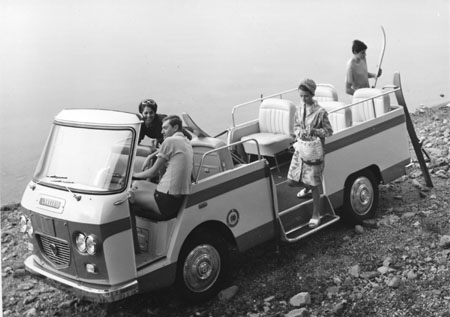
When the larger engine was introduced, two longer wheelbases were optionally available, on which were built some truly bizarre mobile offices, display units and mobile homes – all of which would have severely overtaxed the Flavia engine. The factory offered catalogued versions including dropside utility, light bus, high-roof van, and the absurdly-named ‘JollyRoly’ small camper van; although fitted with berths for four, there were only two seats up front, meaning that the unfortunate third and fourth passengers had no option but to ride in the claustrophobic rear compartment – much more Roly than Jolly. Deferring to the original wearers of the Jolly name, Lancia even produced an enlarged beach car on the Superjolly platform, omitting doors, roof and good taste.
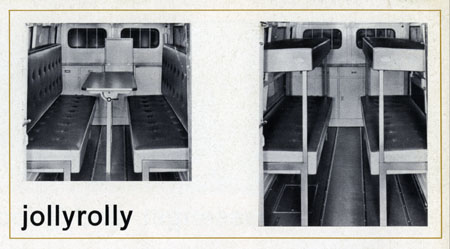
While total sales were just 2.947, the Superjolly doubtless refined the concept of low-loading front-driven commercials, and provided the template for the universal adoption of similar configurations by the Japanese twenty years later. Melbourne agents W H Lowe considered photos and technical material on the Superjolly range, although none is known to have been imported. Recalling that at that stage this country’s tariff wall was set very high to protect its own motor industry, it is likely that any possible importation of the Lancia commercials was killed off by Government taxes, rather than the model’s shortcomings. Even though the Superjolly was sold until 1970, in Europe the introduction of the agricultural-but-cheap Fiat 238 range, using the rugged pushrod four from the 124 saloon, delivered the death-knell to the Superjolly in 1966.
I would still like to own one…
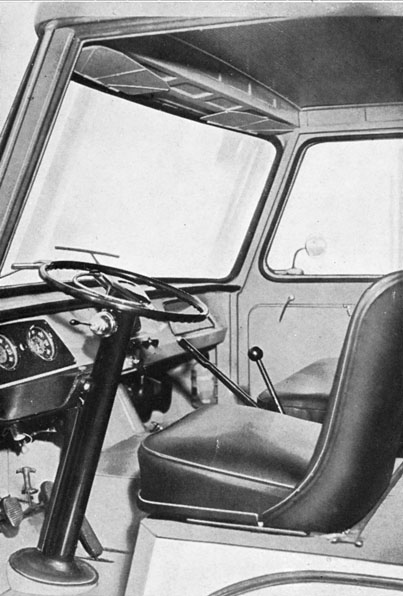
Bruce Lindsay / 6.2013


